Penetration testing services or pentesting is a security practice where cybersecurity experts try to find and exploit vulnerabilities present in applications, networks, and other digital systems. The pen testers, a.k.a ethical hackers, simulate real attacks on the target environment to identify security flaws in its defenses that attackers could take advantage of.
Imagine a bank hiring a thief to break into their vault. If the thief succeeds, the bank will know where they lack in security and take active steps to fix it.
Similarly, in penetration testing services, organizations hire a third-party cybersecurity firm to hack into their applications. The testers try different ways to breach the security defenses. They document the pathways through which they were able to bypass the security. Then they share the test results with the organization so that they can promptly address their security weaknesses.
Since there are roughly 2,200 cyberattacks every day, organizations need to prioritize penetration testing if they want to keep their valuable digital assets safe.
Therefore, this blog is going to dive into the fundamentals of penetration testing and its various aspects. If you have software applications or use networks and the cloud, you should know the importance of penetration testing services and why they are a must in this digital age.
Benefits of Penetration Testing Services
As per IBM, the average cost of a data breach is around $4.45 million. If this isn’t the reason for you to conduct penetration testing, here are several compelling reasons:
- Identify security vulnerabilities before hackers do
- Enhance the defenses of your digital assets
- Comply with industry regulations
- Prevent data breaches and cyberattacks
- Build trust among your customers and shareholders
- Get a competitive advantage
- Increase your market value
- Maintain brand image and reputation
- Have peace of mind knowing your applications are safe
Regular penetration testing services check whether your defenses are resilient against cyberattacks. Additionally, it helps in keeping your security protocols up to date.
Types of Penetration Testing
This section is going to be a bit tricky, as some consider the approach pen testers take are the types of penetration testing (black, white, and grey box). While others assume the areas where penetration testing can be done are the types (applications, networks, etc.). Nevertheless, since we care more about the digital assets that can be secured through pen testing, we will consider that.
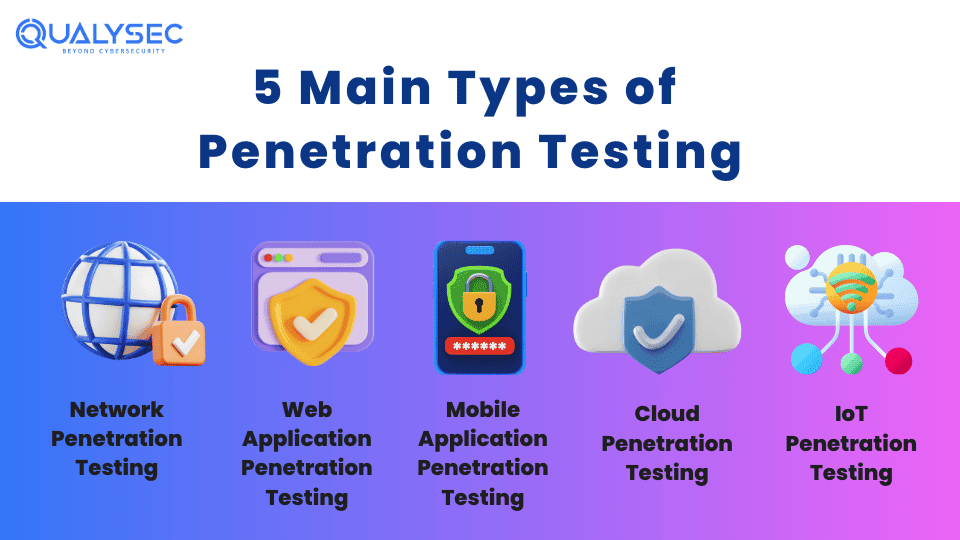
Here are the 5 main types of penetration testing:
1. Network Penetration Testing
Network penetration testing services help identify vulnerabilities in the organization’s network infrastructure, including systems, hosts, and devices. The pen testers use both internal and external tests to find threats in firewall configurations, SQL servers, IPS/IDS, open ports, proxy servers, domain name systems (DNS), etc. that could allow attackers to breach the network systems.
Commonly network vulnerabilities include:
- Outdated Software
- Firewall misconfiguration
- Weak passwords
- Poor authentication protocols
- Insecure network access points
- IoT vulnerabilities
- Shadow IT
2. Web Application Penetration Testing
In web application penetration testing, ethical hackers try to find possible security flaws in the application that could be a possible entry point for attackers. The goal is to detect all the vulnerabilities on the server side and in the web application components, such as front and backends, APIs, and third-party services.
OWASP’s top 10 web application vulnerabilities include:
- Broken access controls
- Cryptographic failures
- Injection
- Insecure design
- Security misconfigurations
- Vulnerable and outdated components
- Identification and authentication failures
- Software and data integrity failures
- Security logging and monitoring failures
- Server-side request forgery
3. Mobile Application Penetration Testing
Since mobile apps store highly sensitive user data and handle financial transactions, they are one of the most targeted components. In fact, Over 2 million cyberattacks occurred on mobile devices globally in December 2022.
In mobile application penetration testing, the testers check for possible entry points, test on all devices (Android, iOS, etc.), stay updated on the latest security patches, and use both automated and manual testing techniques.
Major mobile application cyber threats include:
- Tapjacking
- Taskjacking
- Dirty Stream Attack
- Path Traversal
- SQL Injection
- Man-in-the-middle attack (MITM)
- Log Injection Attack
- Weak Cryptography
- Lack of Authentication
4. Cloud Penetration Testing
Cloud penetration testing examines the security measures of cloud-specific configurations, cloud applications, passwords, encryption, APIs, databases, and storage access. Since most organizations now use cloud computing services like Microsoft Azure, Google Cloud Platform (GCP), and Amazon Web Services (AWS), regular pen tests can help organizations prevent constant security threats.
Common threats in cloud computing:
- Misconfigurations
- Advanced persistent threats (APTs)
- Supply chain compromises
- Insider threats
- Weak identities and credentials
- Weak access management
- Insecure Interfaces and APIs
- Inappropriate use or abuse of cloud services
- Shared services/technology concerns
5. IoT Penetration Testing
IoT devices like smartwatches, voice-controlled devices, smart security devices, autonomous vehicles, etc. are all the rage, but they also have their fair share of security risks. Since these devices are interconnected through the internet and store vast amounts of user data, IoT penetration testing helps find vulnerabilities in the device configuration and network by simulating real attacks.
OWASP top 10 IoT vulnerabilities:
- Weak passwords
- Insecure network services
- Insecure ecosystem interfaces
- Lack of secure updates
- Use of insecure or outdated components
- Insufficient privacy protection
- Insecure data transfer and storage
- Lack of device management
- Insecure default settings
- Lack of physical hardening
What are the Tools Used in Penetration Testing?
A comprehensive penetration test uses a combination of both automated pen testing tools and manual techniques. These tools are vulnerability scanners that also generate accurate reports. However, as these tools have a limited database of vulnerabilities, they can not do in-depth analysis. Nevertheless, these tools are very effective in identifying known vulnerabilities quickly.
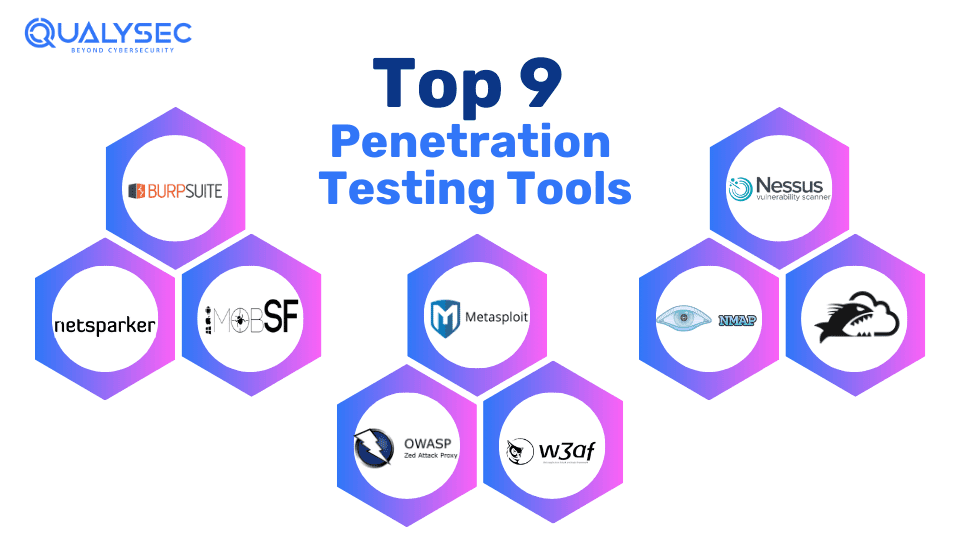
There are several penetration tools available, but only a handful are the best, such as:
1. Burp Suite
A comprehensive penetration testing tool for web applications. It includes components for scanning, crawling, and manipulating traffic, which allows testers to identify security vulnerabilities and exploit them.
2. Nmap
A network scanning tool that provides detailed info about network services, hosts, and operating systems. It is a highly used open-source tool for network discovery and security audit.
3. Metasploit
Metasploit is a penetration testing framework that includes a huge library of exploitable vulnerabilities. It allows pen testers to create custom exploits, simulate attacks, and automate pen testing. It is widely used to identify vulnerabilities in operating systems and applications.
4. Nessus
A scanner that detects vulnerabilities in applications, loudness, and network resources. It has a vast plugin database that is compiled automatically to improve the scan performance and reduce the time required to research and remediate vulnerabilities.
5. OWASP ZAP
OWASP Zed Attack Proxy (ZAP) is a web application penetration testing tool. It performs a wide range of security functions, including passive scanning, dictionary lists, crawlers, and intercepting web requests. It helps identify major vulnerabilities in web applications like SQL inject and XSS.
6. MobSF
Mobile Security Framework (MobSF) is an all-in-one, automated mobile application penetration testing framework that can perform static and dynamic analysis. It helps identify vulnerabilities in all types of OS including Android and iOS.
7. Nikto
It is an open-source command-line vulnerability scanner for applications that scans web servers for harmful files/CGIs, outdated software, and other security issues. It also checks for server configuration components, such as index files and HTTP server options.
8. Pacu
An open-source exploitation framework designed to test cloud-based services, especially AWS. It allows pen testers to exploit configuration and other security flaws in AWS accounts by using modules to pace up its operations.
9. W3af
The Web Application Attack and Audit Framework (w3af) is an open-source web application vulnerability scanner. Its modular architecture, combined with various plugins makes it a versatile tool for testers to assess the security of web applications.
Penetration Testing Steps
The basic penetration testing process can be broken down into 8 steps:
- Information Gathering: The testers gather as much knowledge about the target environment (application or network) as possible. Either they get it from the client itself or publicly available web pages.
- Planning/Scoping: Then the testers define the objectives and scope of the test. This includes specifying which vulnerabilities they are going to target, what tools they are going to use, and what should be the expected outcome.
- Automated Vulnerability Scanning: Next the testers use automated vulnerability scanners (like the ones mentioned above) to scan the target environment for known vulnerabilities.
- Manual Penetration Testing: This is the most crucial step as it involves testers using their manual skills to identify and exploit vulnerabilities present in the target environment. It is an in-depth analysis of the security measures and also detects vulnerabilities missed by the tools.
- Reporting: The results of the test are documented in a report and shared with the development team. It includes the vulnerabilities found, their impact level, and remediation recommendations.
- Remediation: The development team uses the recommendations to address the vulnerabilities. If needed, the testing team will assist the development team in locating and remediating the vulnerabilities over consultation calls.
- Retesting: The testing team will again test the target system to check whether all the remediation patches are actually implemented or not, or whether any additional vulnerabilities are remaining. Then the testing team will issue a final report having all the details of the test from start to finish.
- LoA/Security Certificate: At last, the testing team will provide the client with a letter of attestation (LoA) or security certificate that validates penetration testing. This certificate is used to showcase shareholders and for compliance needs.
Curious to see a real penetration testing report? Tap the link below and download one right now in seconds!
Latest Penetration Testing Report

Challenges in Penetration Testing Services
Since penetration testing and vulnerability assessment are so mainstream today, it may become easy to overlook some of the most critical challenges they face. However, if not managed correctly, these challenges can leave your organization vulnerable to attacks.
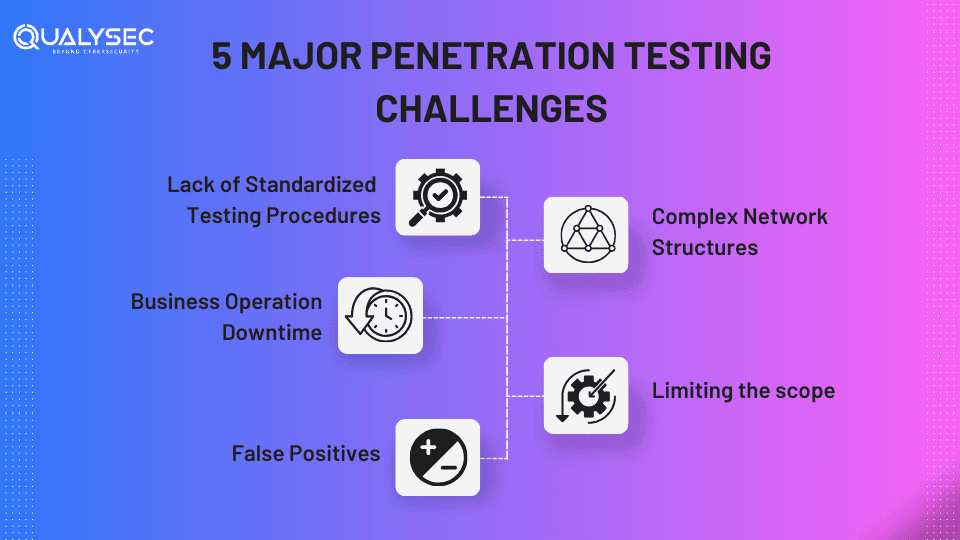
Here are 5 common penetration testing challenges:
1. Lack of Standardized Testing Procedures
Without a standardized methodology, organizations can find it challenging to create consistency in their penetration testing process. As a result, it might be difficult to identify vulnerabilities and develop actionable solutions. So, make sure to choose a testing company that follows a process-based approach such as OWASP or NIST.
2. Business Operation Downtime:
Conducting penetration testing services can sometimes interfere with business operations. As a result, it can cause downtime and disruptions that can impact the company’s productivity and revenue. This usually happens when the testing requires significant network resources or involves complex systems.
3. False Positives
It’s common for most penetration testing companies to run automated vulnerability scanners against the client’s digital assets. Although these scanners can speed up the testing time and might identify known vulnerabilities, they also generate many false positives. Make sure you are choosing a penetration testing company that uses both automated and manual penetration testing techniques for in-depth analysis.
4. Complex Network Structures
Some organizations may have complex network infrastructure, making it difficult for the testers to identify all the entry points for potential breaches during penetration testing. This challenge may arise due to multiple applications, operating systems, and devices in the network.
5. Limiting the scope
With technological advancement, everything is now interconnected. Applications, networks, IoT devices, the cloud, etc. are all connected through the internet. It is always recommended to perform penetration testing for all the devices and components the organization uses. Limiting the scope of the pen test by leaving certain unimportant channels may cost you significantly in the future.
Industry Applications of Penetration Testing
From healthcare to e-commerce, every industry is a target for cyberattacks. Each of them has their own specific requirements, technical complexities, and data sensitivities. Let’s check out how penetration testing helps each industry.
1. Finance Industry
Penetration testing is vital for the financial sector to ensure the security of highly confidential financial data. It helps identify vulnerabilities in online banking platforms, payment systems, and other financial applications. Additionally, it helps financial institutions to prevent data breaches and secure customer information.
2. Healthcare Industry
In the healthcare industry, penetration testing helps secure patient data and prevents cyberattacks that could compromise medical records and patient care. It also helps detect vulnerabilities in medical devices, electronic health records (EHRs), and other healthcare systems.
3. Government Agencies
Government agency applications store sensitive user data, which is why they rely heavily on penetration testing services to secure their systems. It helps detect vulnerabilities in government databases, networks, and applications, helping them prevent data breaches and cyberattacks.
4. E-commerce
e-commerce websites and applications store a huge amount of customer data and handle financial transactions. Penetration testing helps identify vulnerabilities in payment systems, point-of-sale systems, and other e-commerce applications. As a result, it helps them enhance their defenses and prevent data breaches.
5. IT and Technology
In the IT and technology sector, penetration testing enhances the security of various systems and applications, such as network infrastructure, software development, cloud computing, Internet of Things (IoT), artificial intelligence and machine learning (AI/ML), and data centers. It helps identify vulnerabilities in these areas and protects them against unauthorized access, data breaches, and other cyberattacks.
Want to secure your applications, networks, and other systems from data breaches and cyberattacks? Qualysec provides process-based hybrid penetration testing services that will help you find security vulnerabilities. We have completed over 450 assessments for over 110 clients; needless to say, we have yet to receive a single breach case from them. So why wait? Talk to our cybersecurity expert now!
Talk to our Cybersecurity Expert to discuss your specific needs and how we can help your business.
Future Trends in Penetration Testing
Penetration testing and vulnerability assessment is an integral part of cybersecurity, helping organizations identify and address vulnerabilities before they can be exploited by hacking. As technology continues to evolve, new methods and tools are being used in the testing process. Here are some future trends that are expected to shape penetration testing:
AI and Machine Learning Integration
The integration of artificial intelligence (AI) and machine learning (ML) in penetration testing is going to revolutionize the way cybersecurity professionals identify and exploit vulnerabilities. AI-powered testing tools and ML algorithms can analyze huge amounts of data, identify patterns, and predict potential vulnerabilities. As a result, testers can focus on more complex and high-risk attacks. As AI and ML tech continue to evolve, penetration testers can expect to see an increase in automation and improvement in accuracy.
Automation in Penetration Testing
While we already have automated penetration testing tools, the more this technology evolves the more these tools are going to be productive. Automation helps pen testers streamline their work, reduce time and effort in the testing process, and improve the accuracy of their results. Further, automated tools are going to free up human testers for common vulnerabilities by performing tasks such as vulnerability scanning, exploitation, and reporting. Despite being better, the future will still require human testing skills for new and unique cyber threats.
Comparative Analysis
There are two phases in penetration testing – vulnerability assessment and manual penetration testing. While both seem familiar and have the same goal (i.e. to find security vulnerabilities), they differ in techniques and approach.
Penetration Testing vs. Vulnerability Assessment
| Aspect | Penetration Testing | Vulnerability Assessment |
| Objective | Identify and exploit vulnerabilities by simulating real-world attacks. | Identify and report vulnerabilities without exploiting them. |
| Methodology | Active testing, including exploitation and data exfiltration. | Passive testing, including scanning and reporting. |
| Scope | Focuses on specific applications, systems, or networks. | Focuses on the entire infrastructure or network. |
| Depth of Testing | In-depth analysis of vulnerabilities and systems. | Surface-level analysis of vulnerabilities and systems. |
| Output | Detailed report on exploited vulnerabilities and their potential impact. | List of identified vulnerabilities with severity ratings. |
| Time | Typically takes several days to weeks. | Typically takes several hours to days. |
| Cost | Usually higher, due to manual testing and exploitation. | Mostly low due to automated scanning and reporting. |
| Skill Level Required | Requires advanced technical skills and hacking expertise. | Requires basic technical skills and knowledge. |
Manual vs. Automated Penetration Testing
| Characteristic | Manual Penetration Testing | Automated Penetration Testing |
| Approach | Hand-on, human-driven | Automated, tool-based |
| Scope | Tailored to specific security needs. | Can cover the entire IT infrastructure. |
| Depth | In-depth analysis | Bracd coverage |
| False Positives | Low | High |
| Reporting | Detailed, contextual | Standardized, less nuanced |
| Cost | Higher | Lower |
| Time Taken | Longer | Shorter |
| Skills Required | Requires expert pen testers or ethical hackers | Can be done by a less skilled individual with the knowledge of the tool. |
Conclusion
Penetration testing services are a crucial component of any comprehensive cybersecurity strategy. By simulating real-world attacks, ethical hackers can identify security vulnerabilities and help organizations strengthen their defenses. Effective penetration testing requires a combination of both automated tools and manual techniques to ensure a thorough analysis of the target environment.
As technology continues to evolve, penetration testing service providers will play a key role in protecting digital assets like applications and networks. By staying up to date with the latest trends and testing tools, organizations can ensure their security measures remain robust and effective in the face of ever-growing cyber threats.
FAQ
Q: What are penetration testing services?
A: Penetration testing services are cybersecurity exercises that simulate real attacks on applications, systems, and networks, to identify and exploit security vulnerabilities. As a result, it helps organizations know their security flaws and address them promptly.
Q: How much should I pay for a penetration test?
A: A professional penetration test should cost between $1,000 – $5,000. However, the cost could go up if you have complex technical applications and multiple network components.
Q: Who performs penetration testing?
A: Penetration testing is performed by ethical hackers. Most ethical hackers have advanced development skills and certifications in pen testing, such as CEH, OCSP, CISSAP, etc.











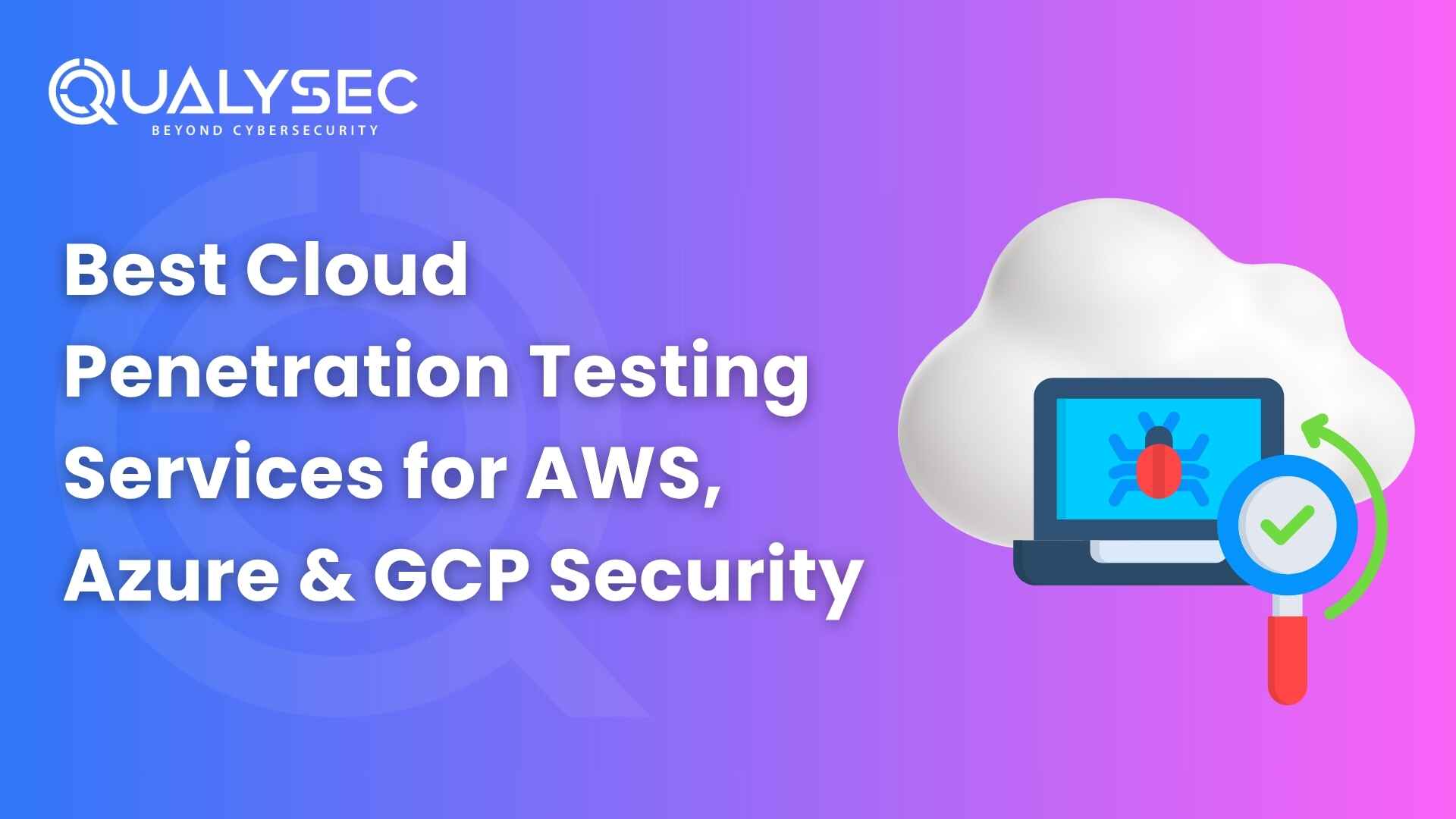
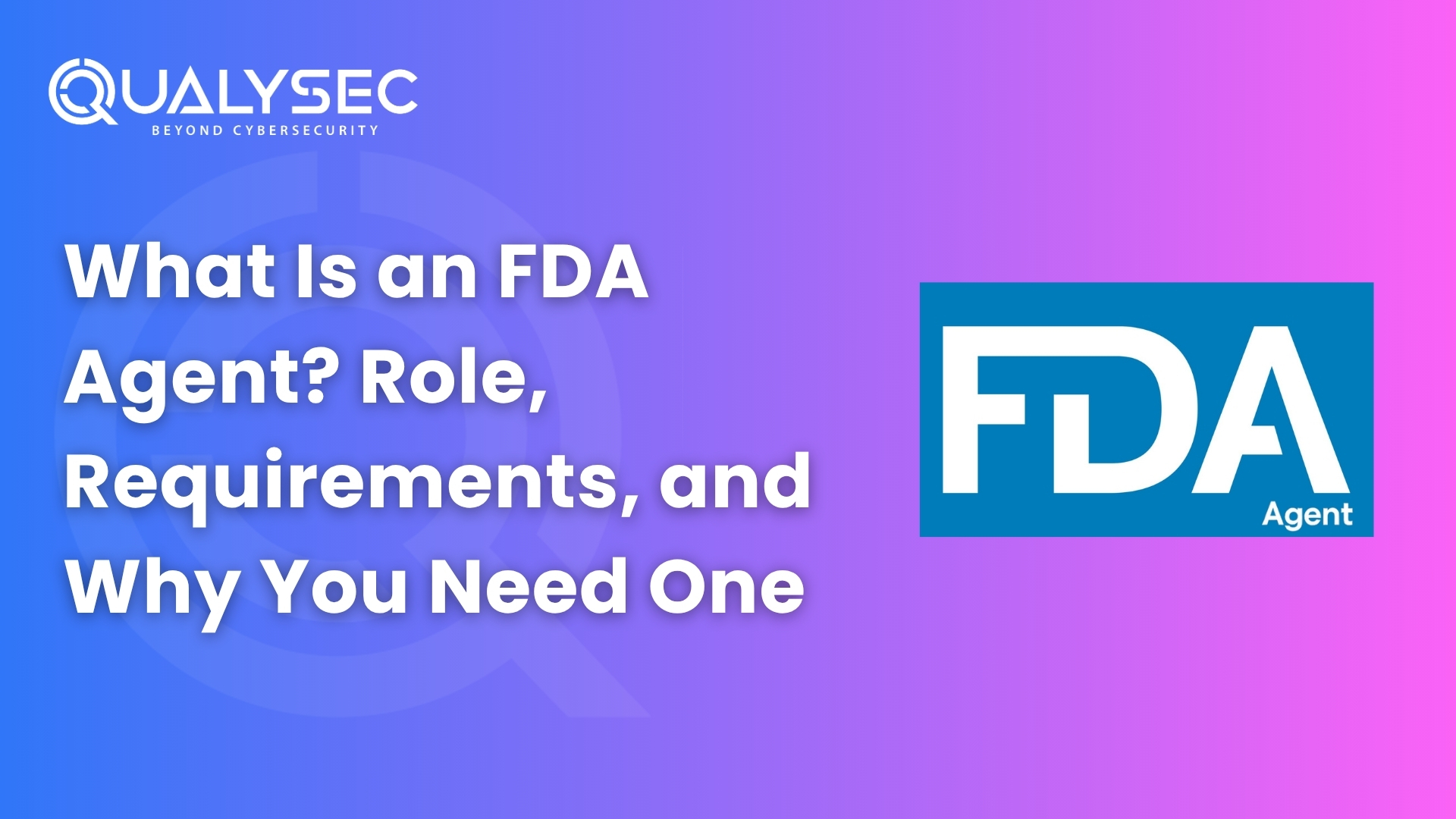
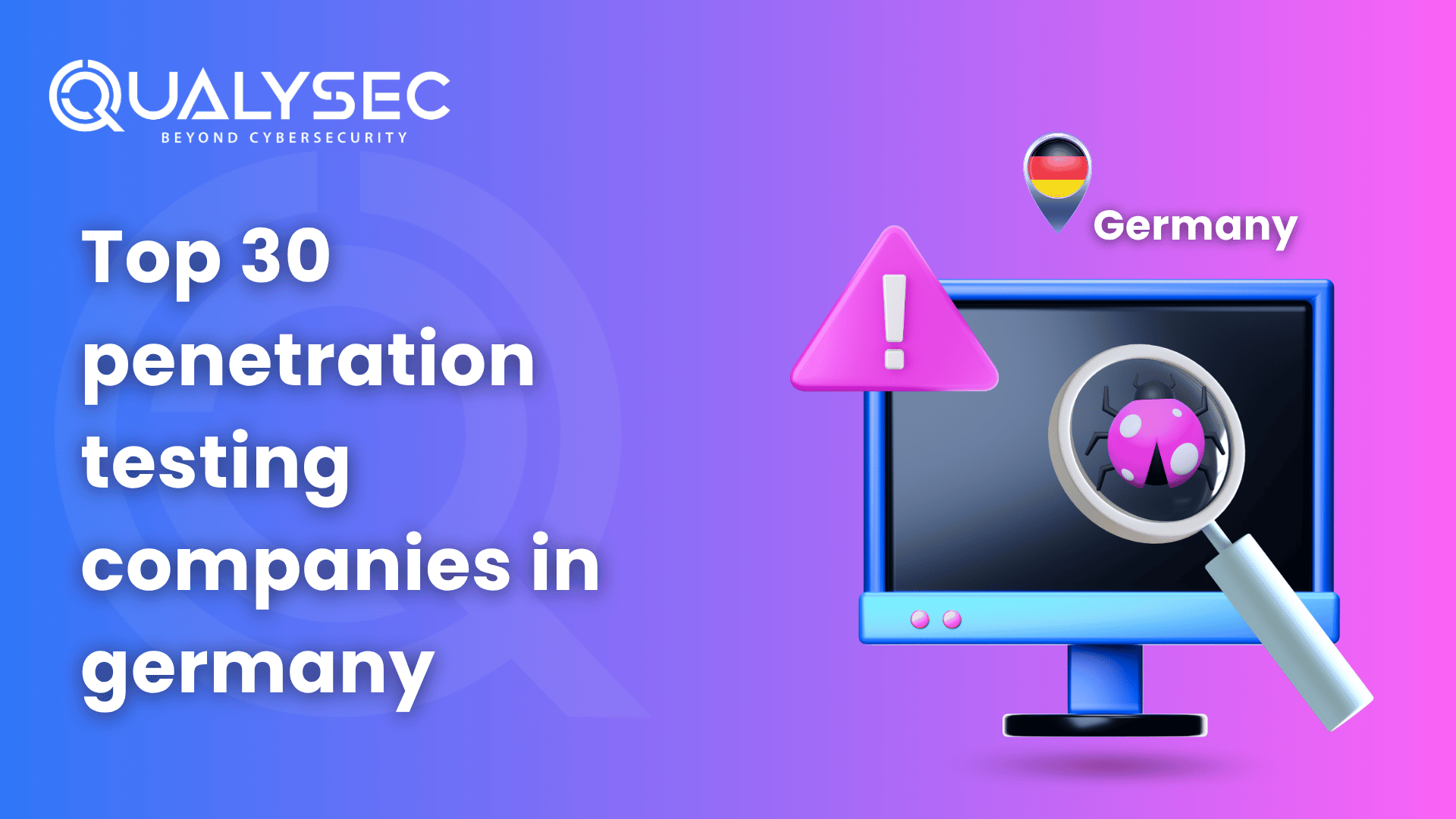







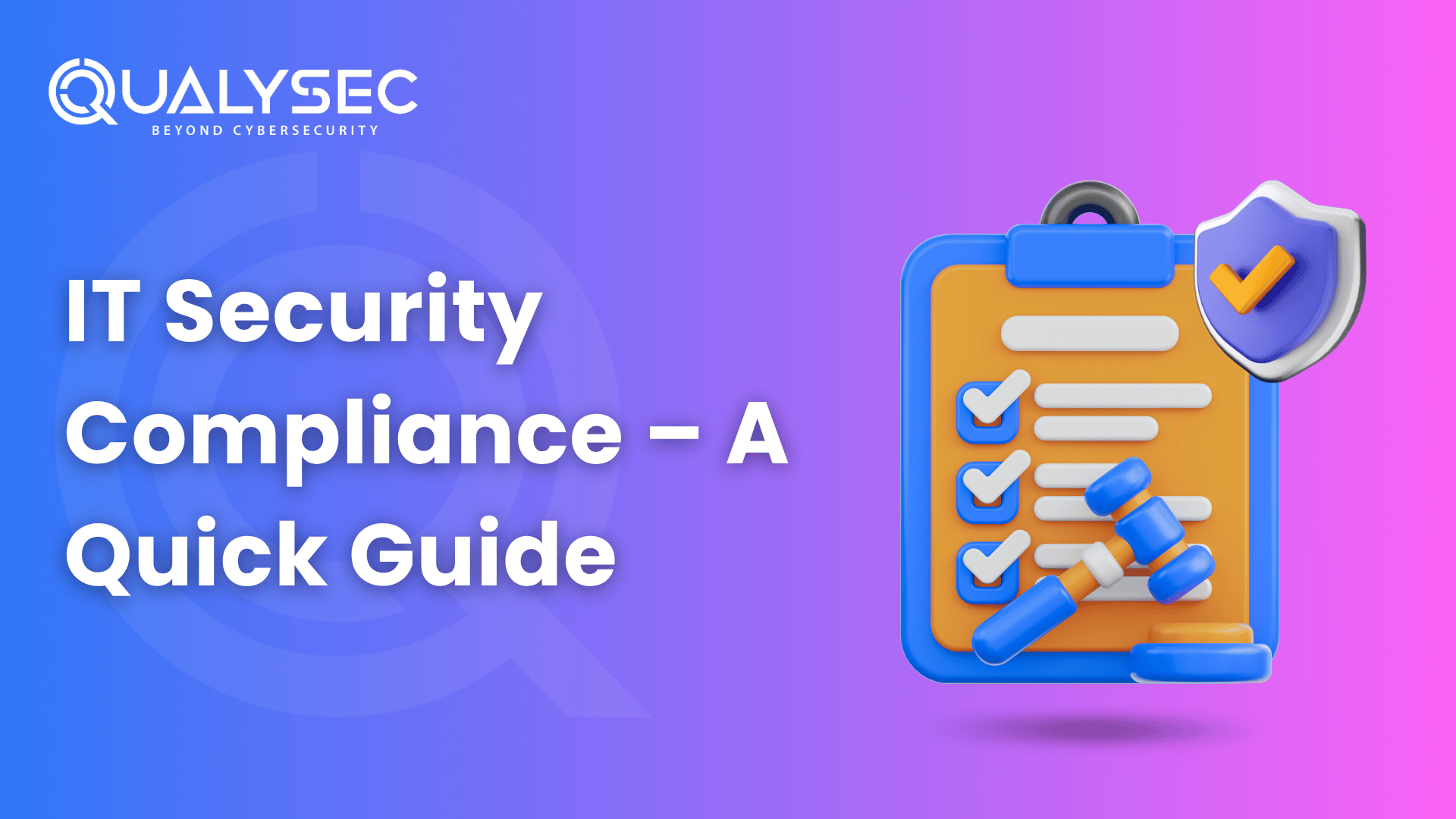















































































































































































































































































































































































































































































































0 Comments